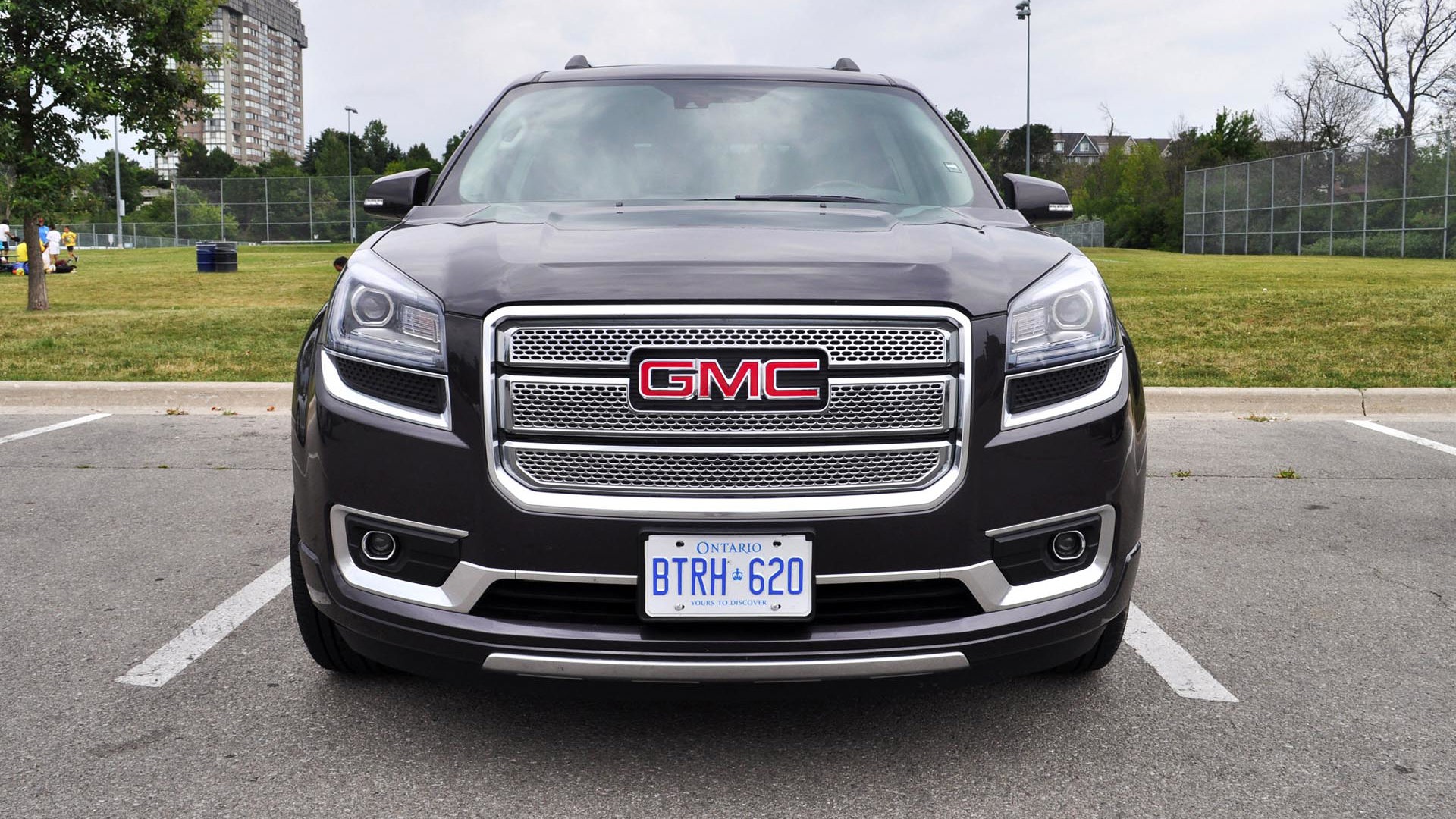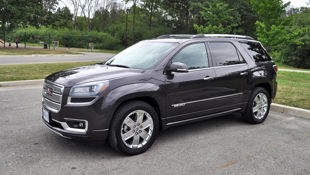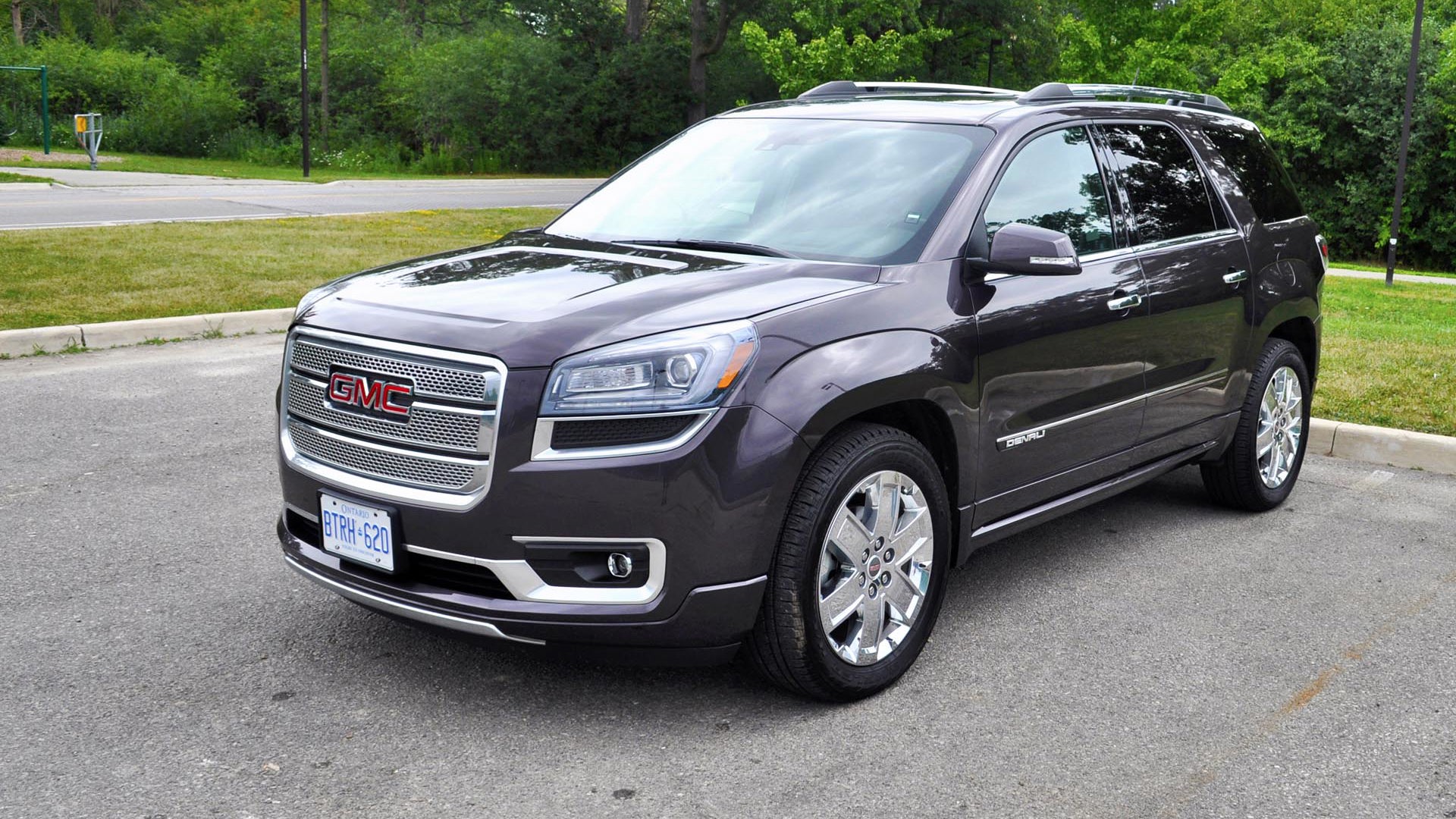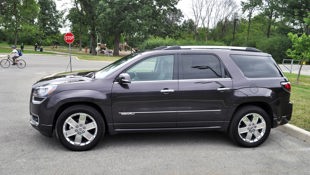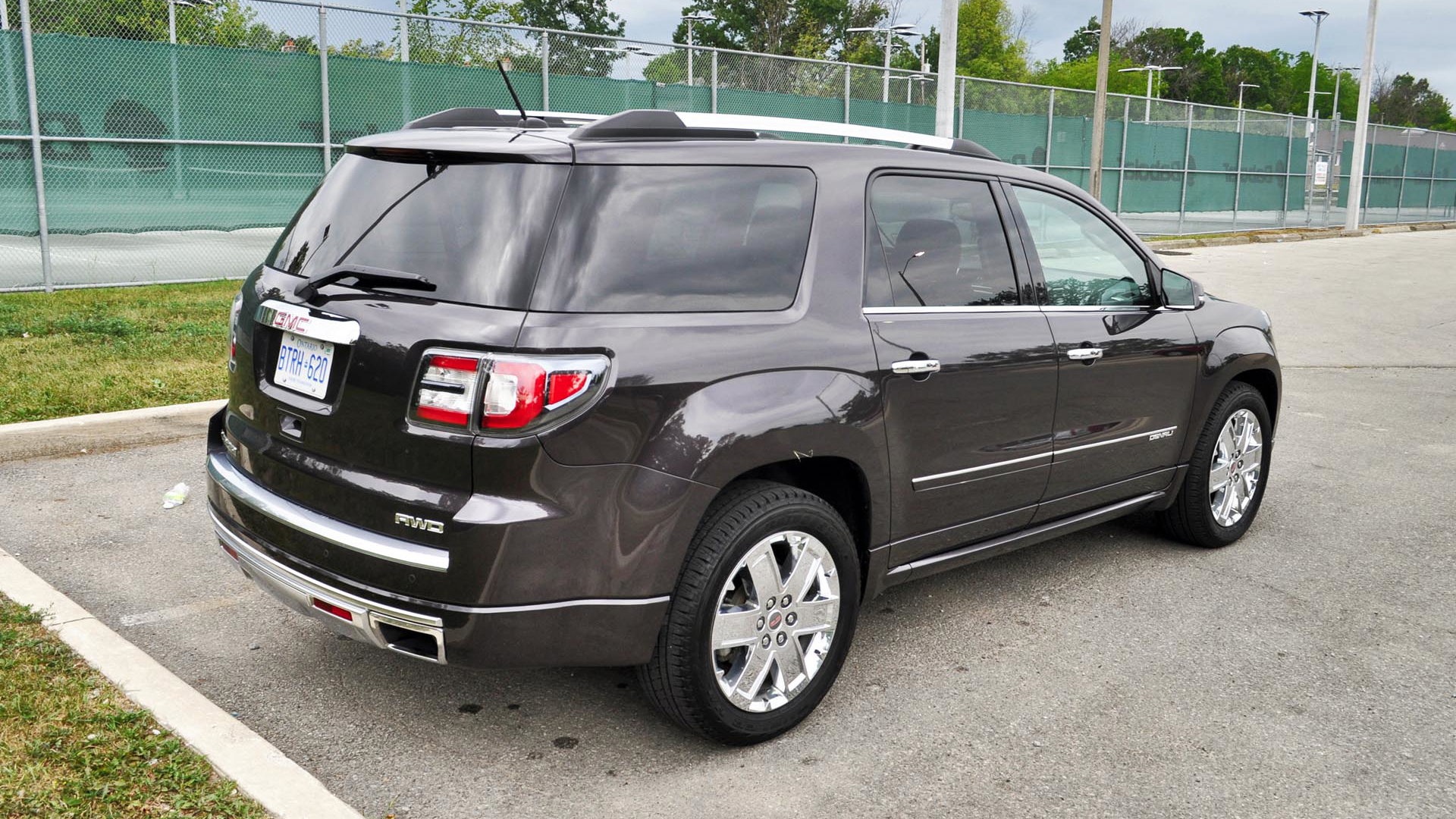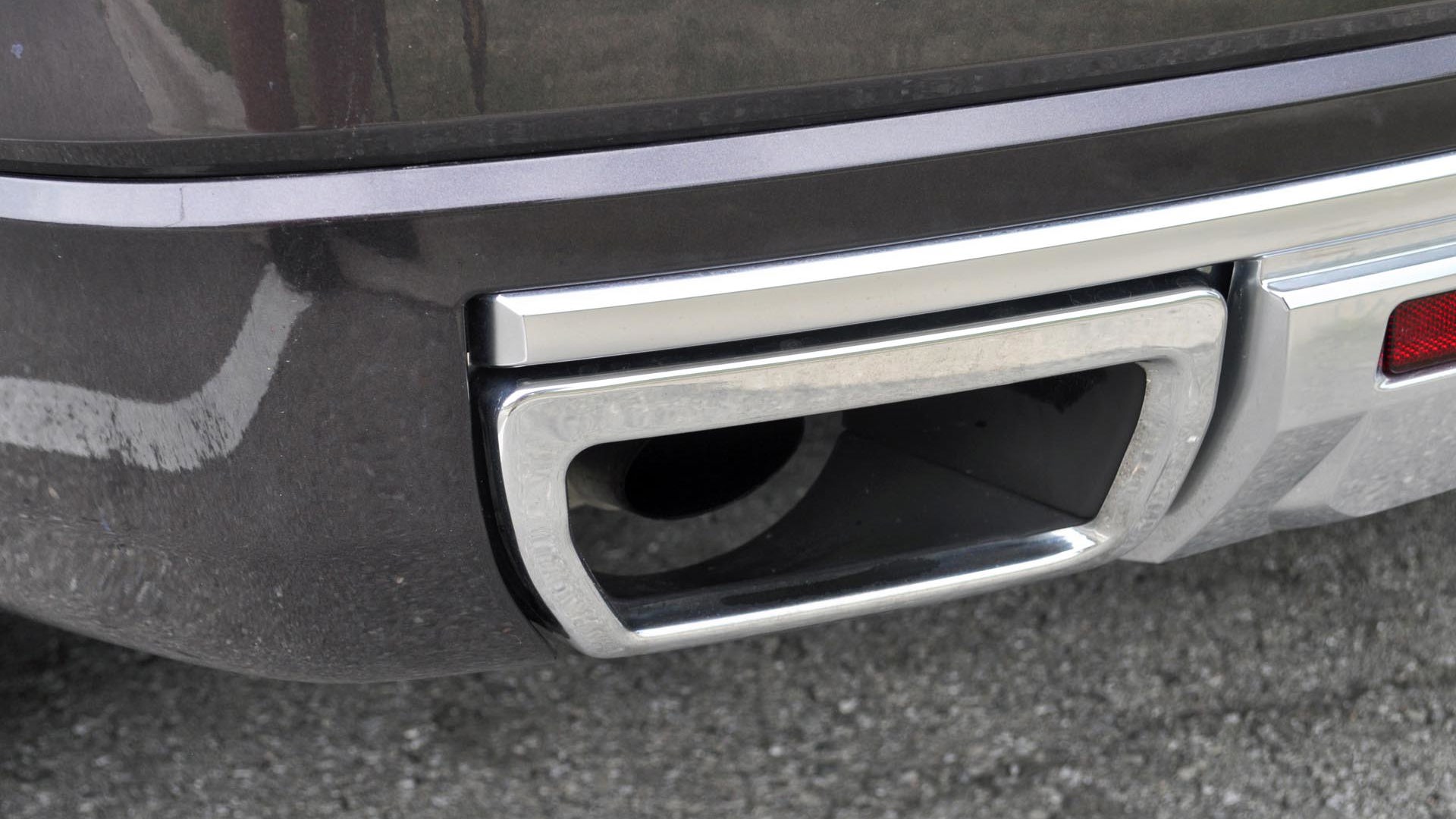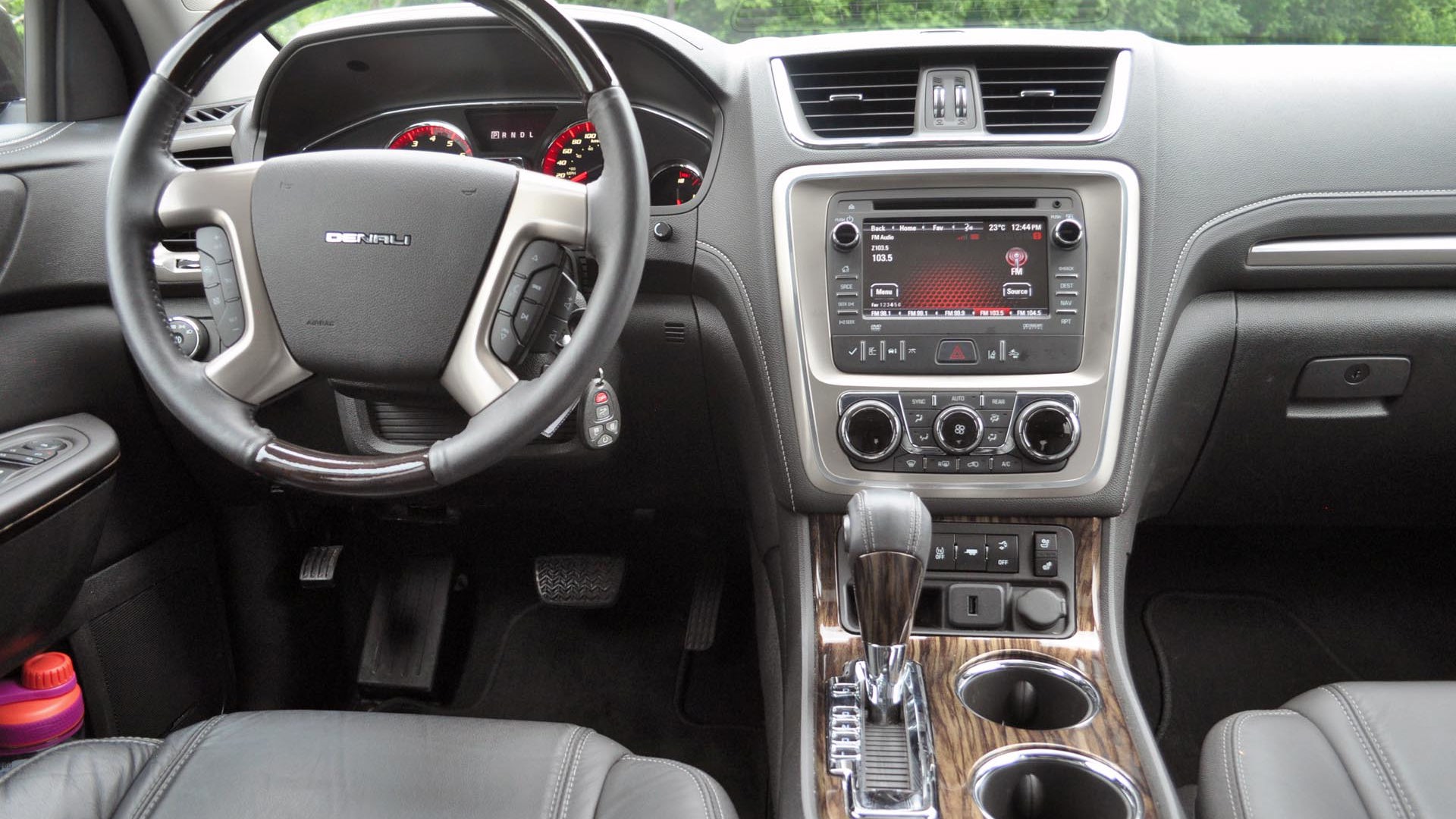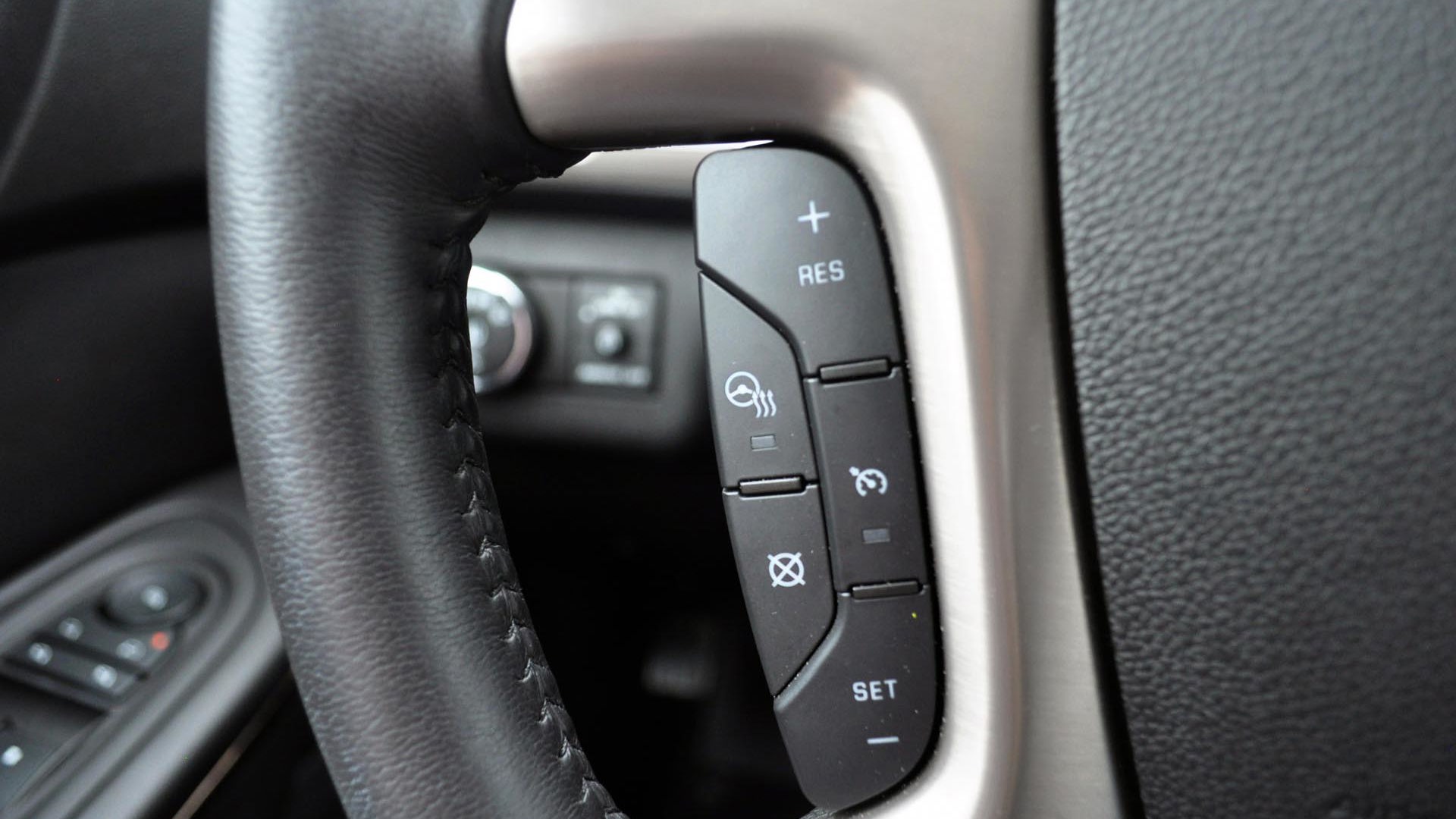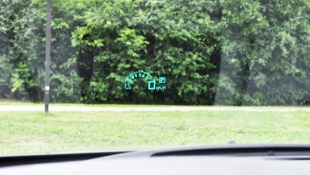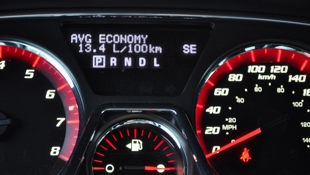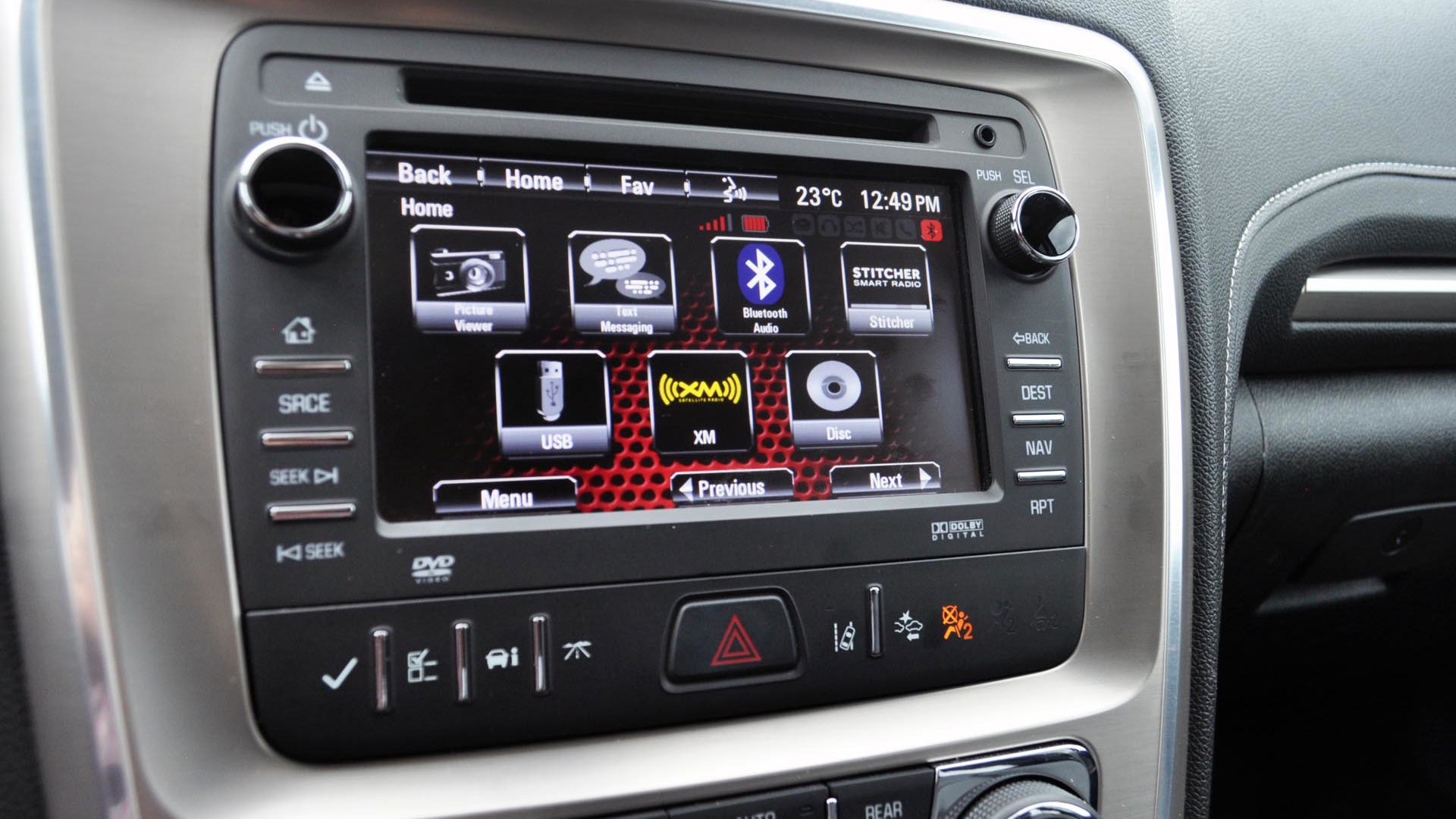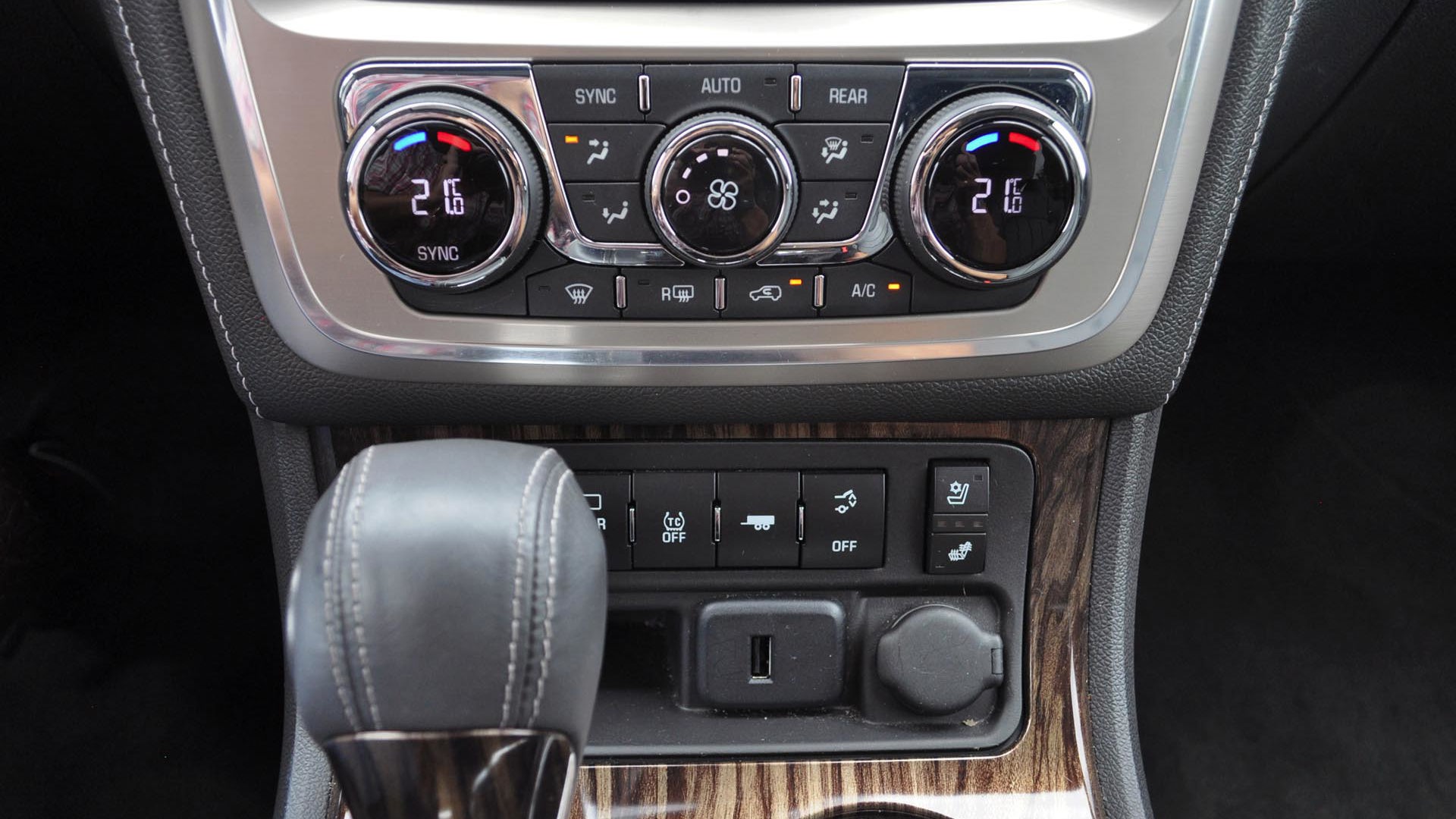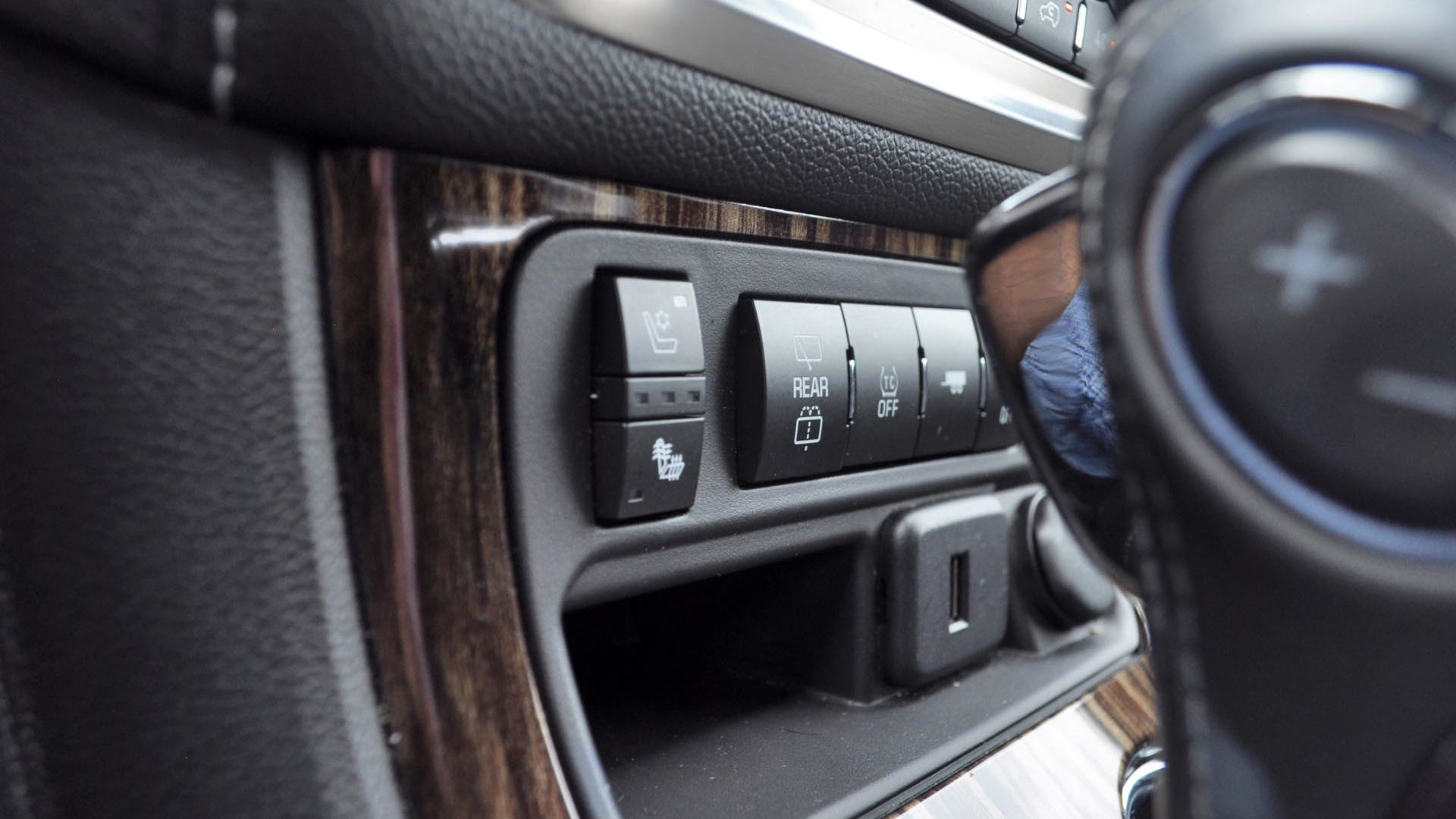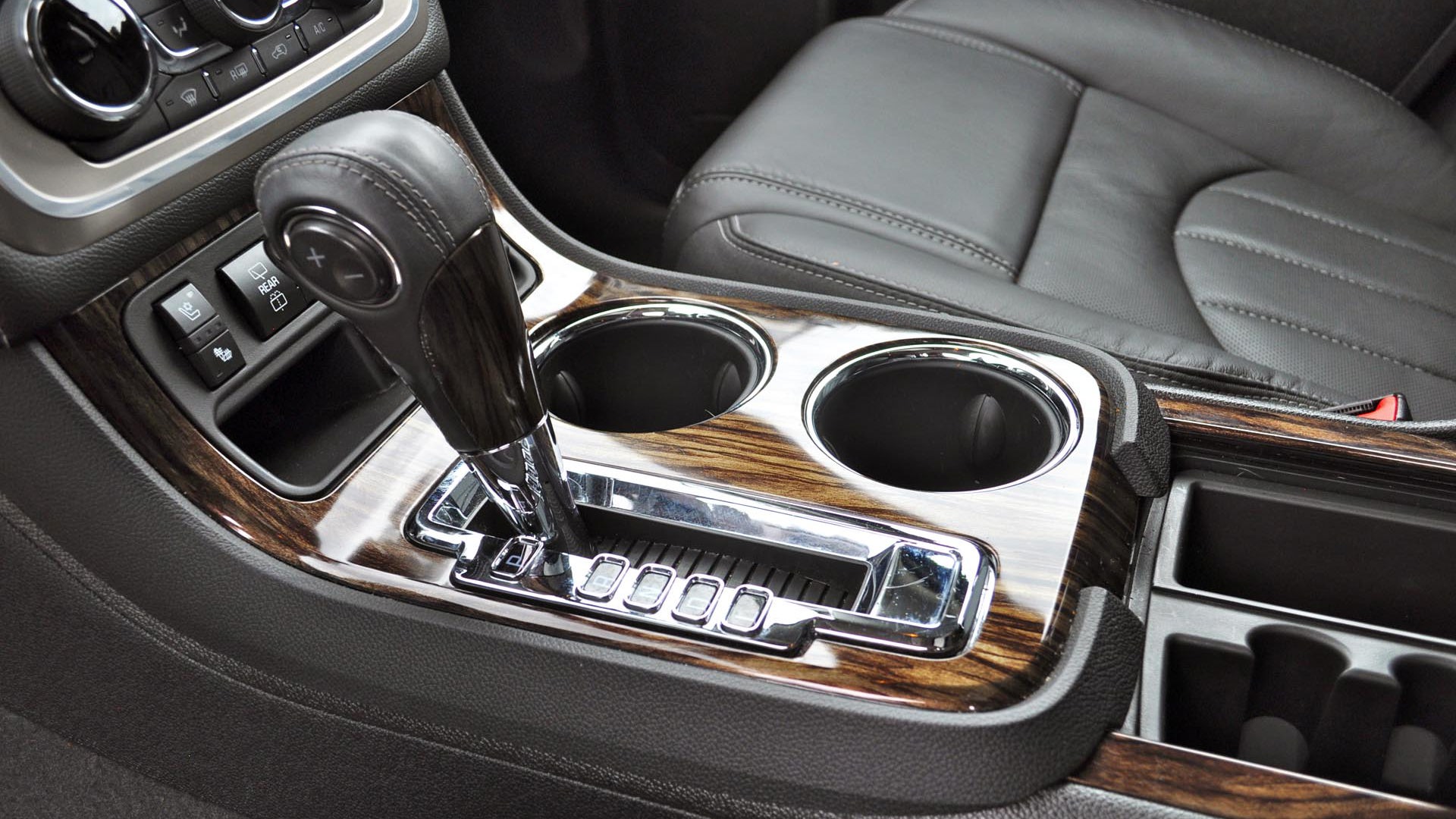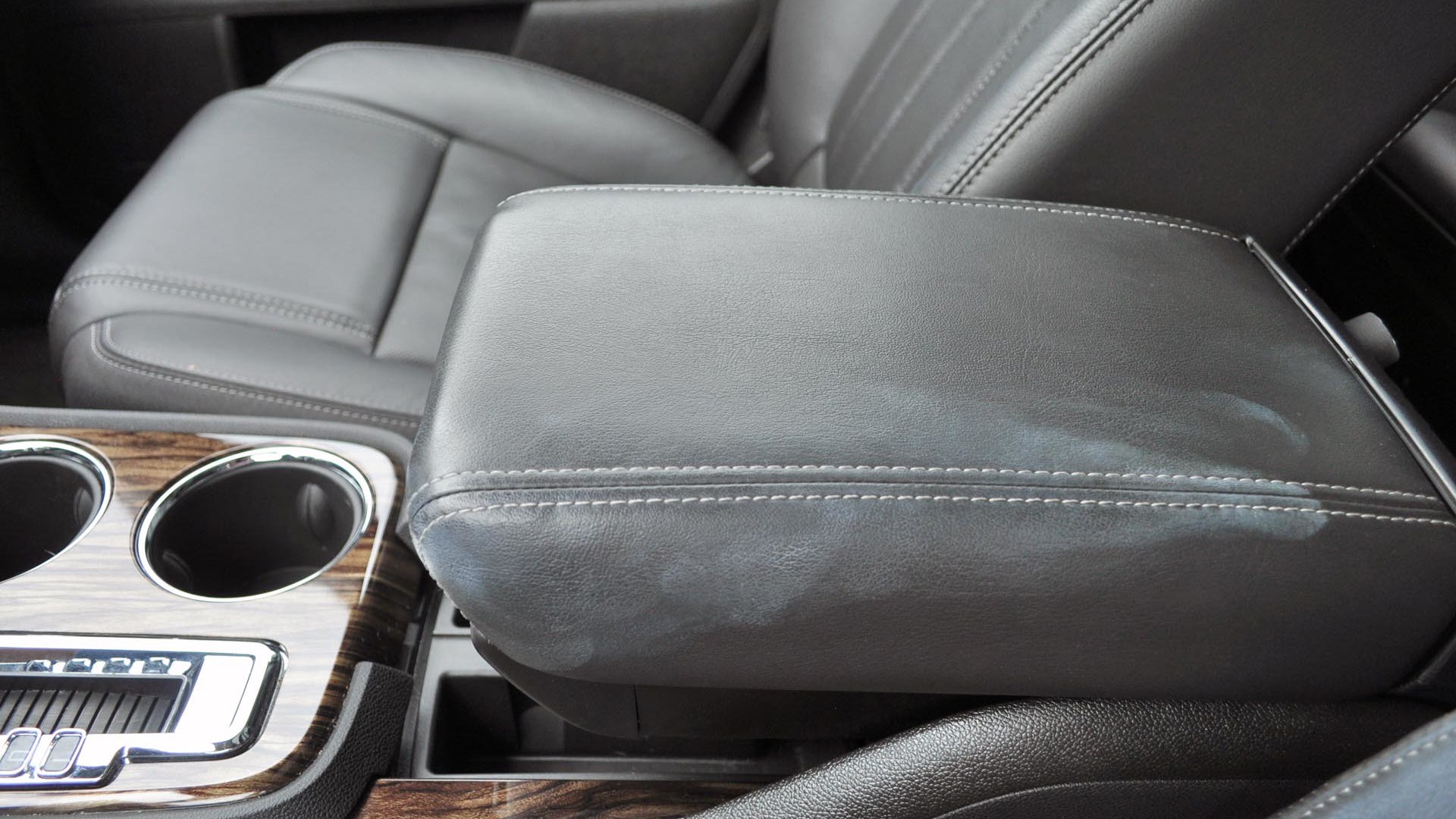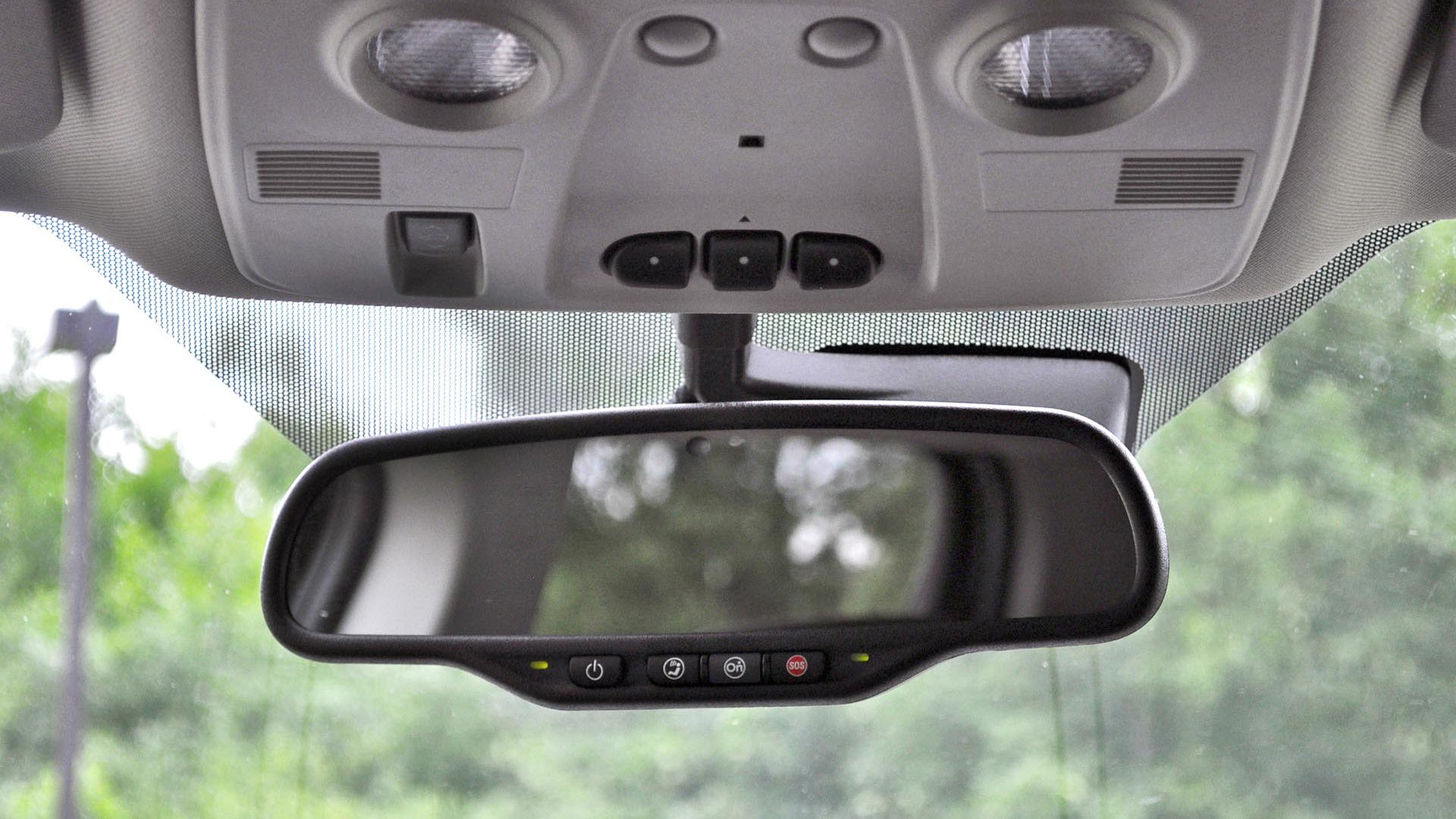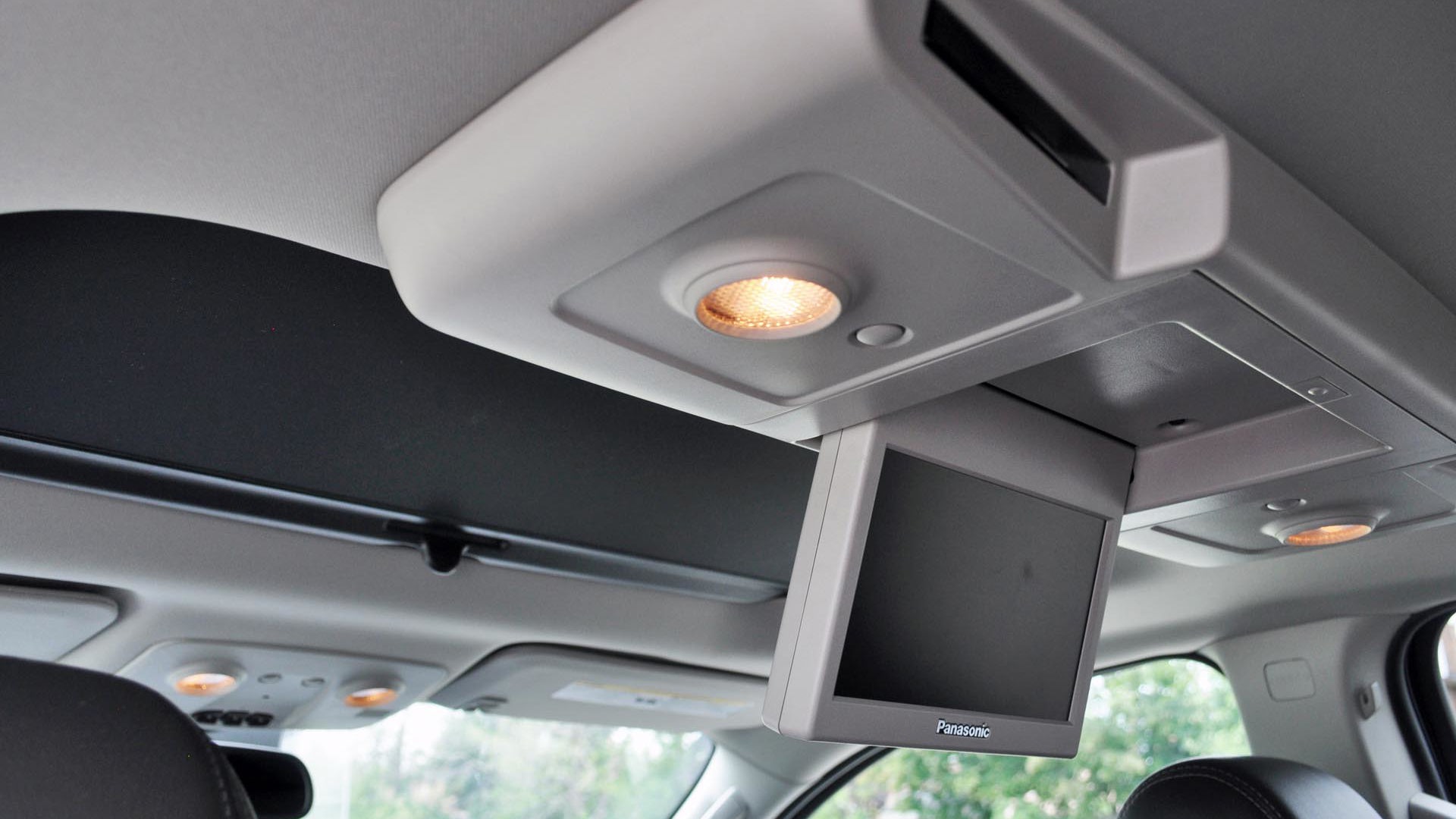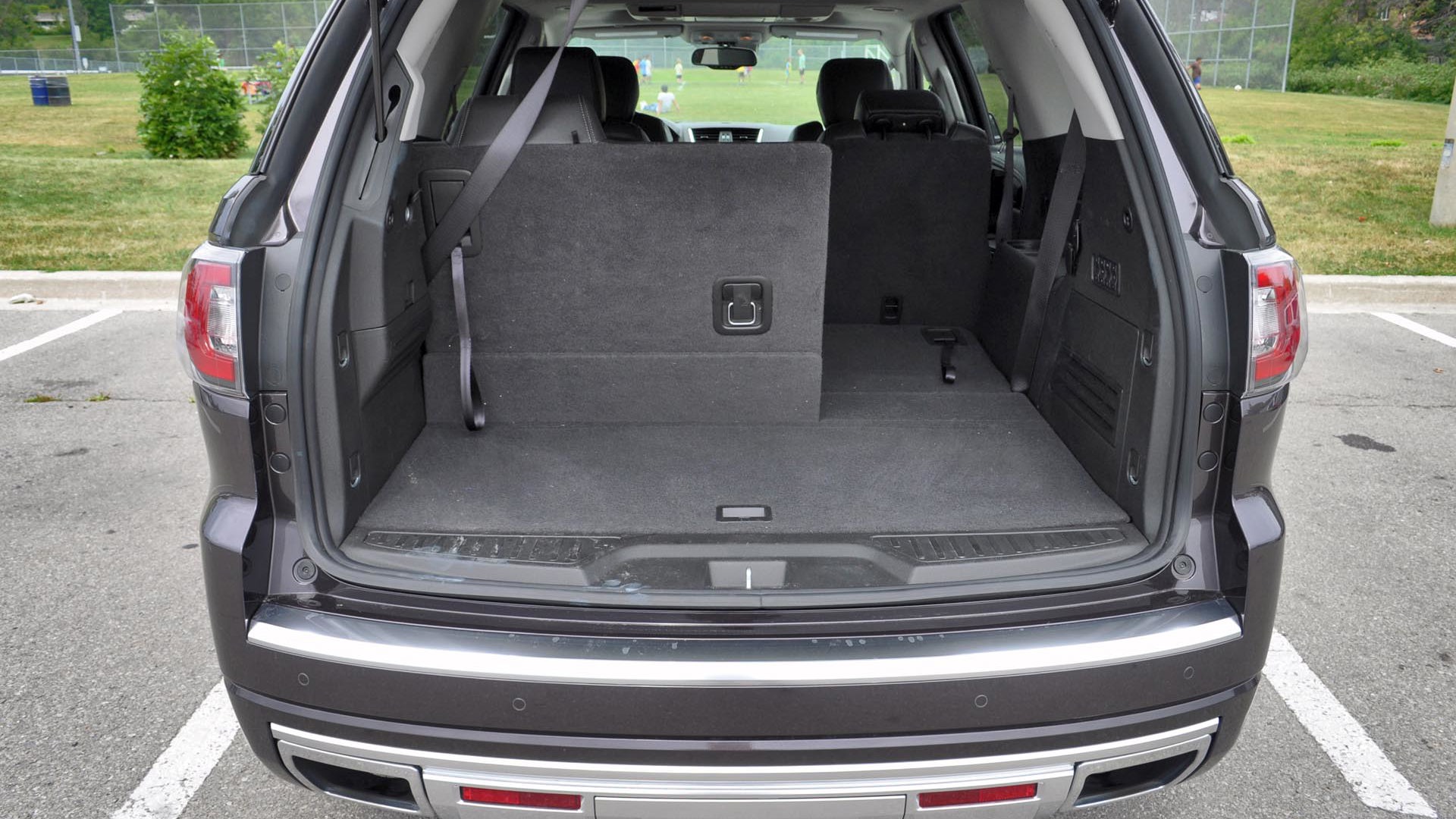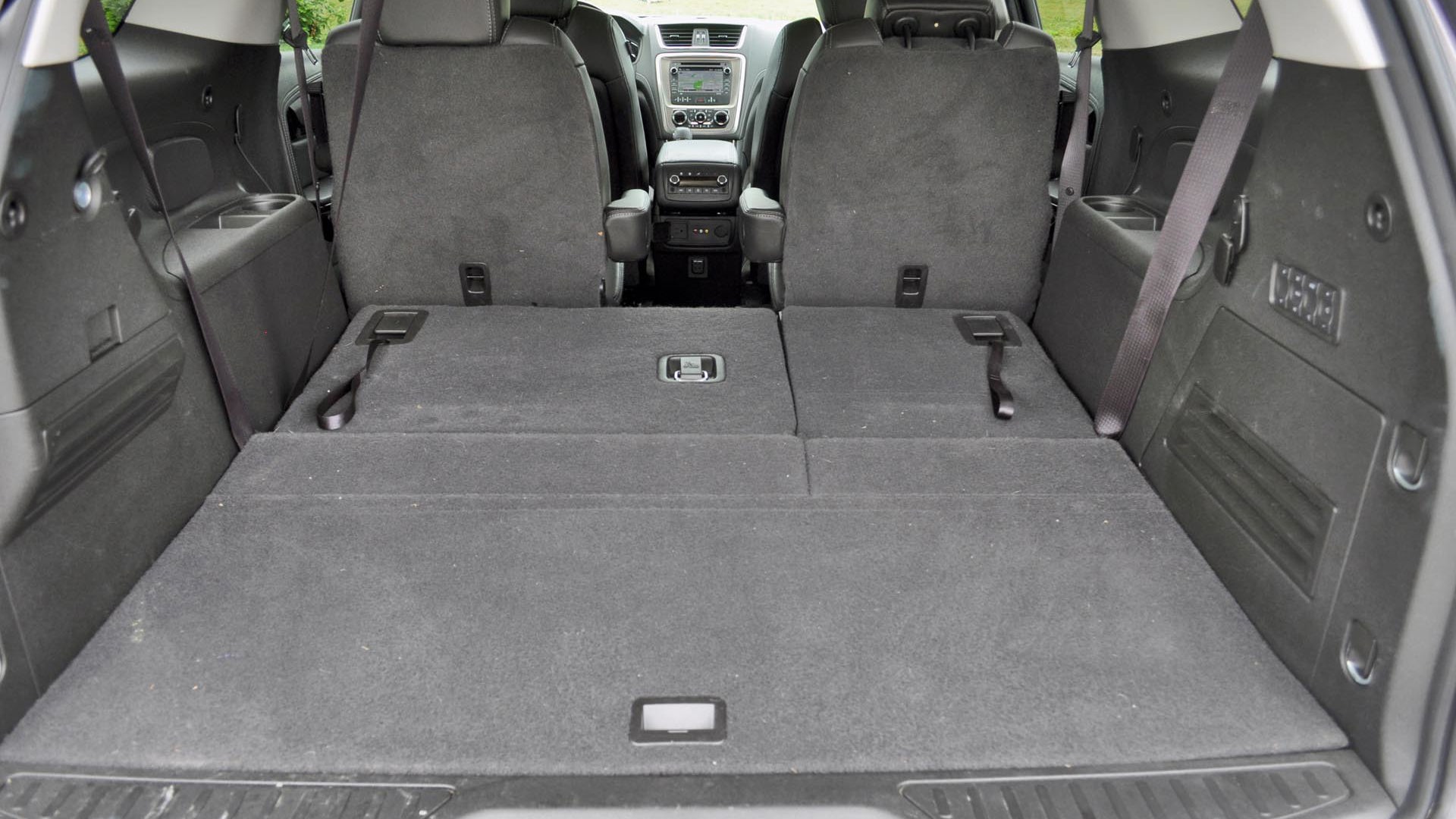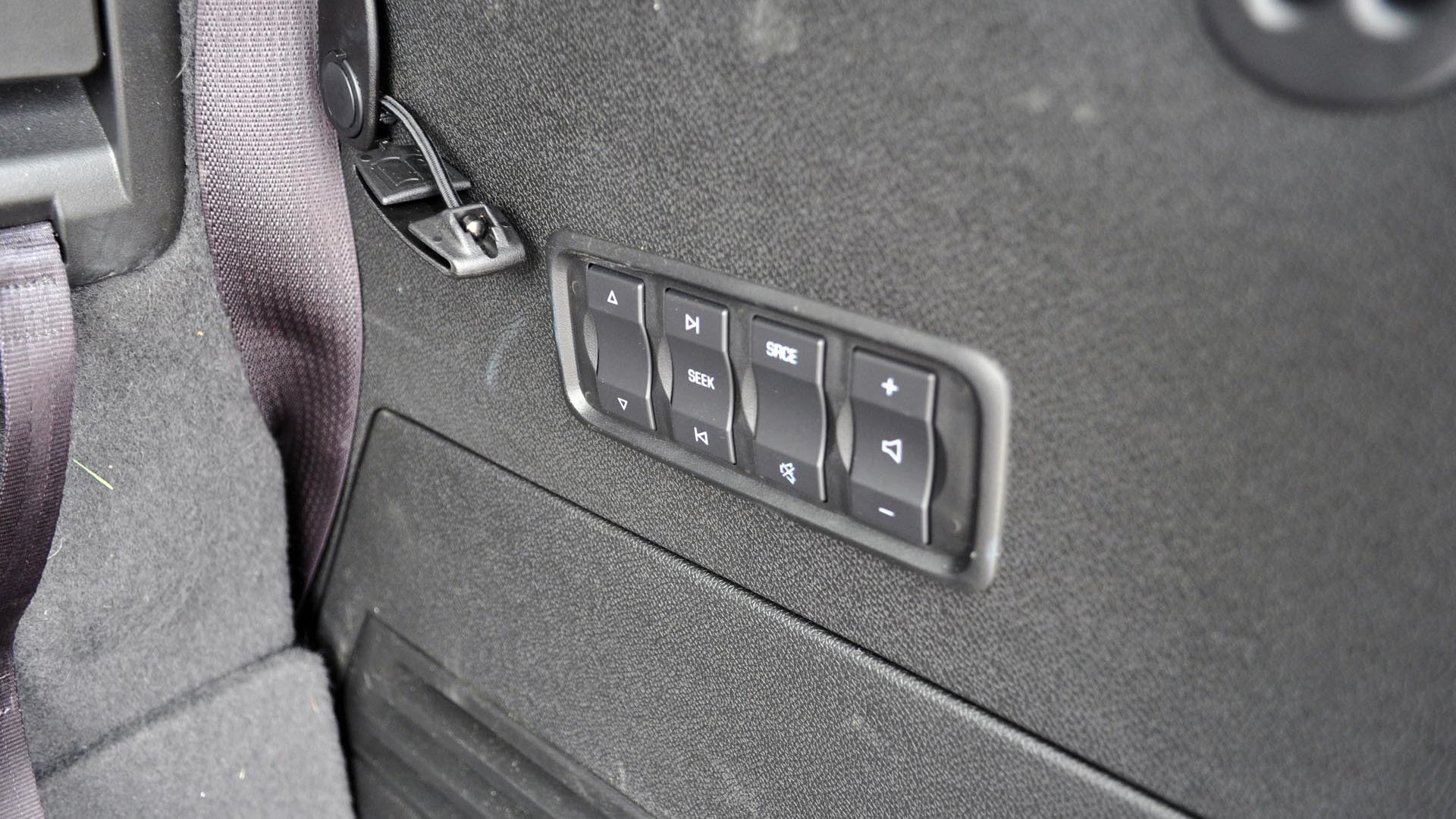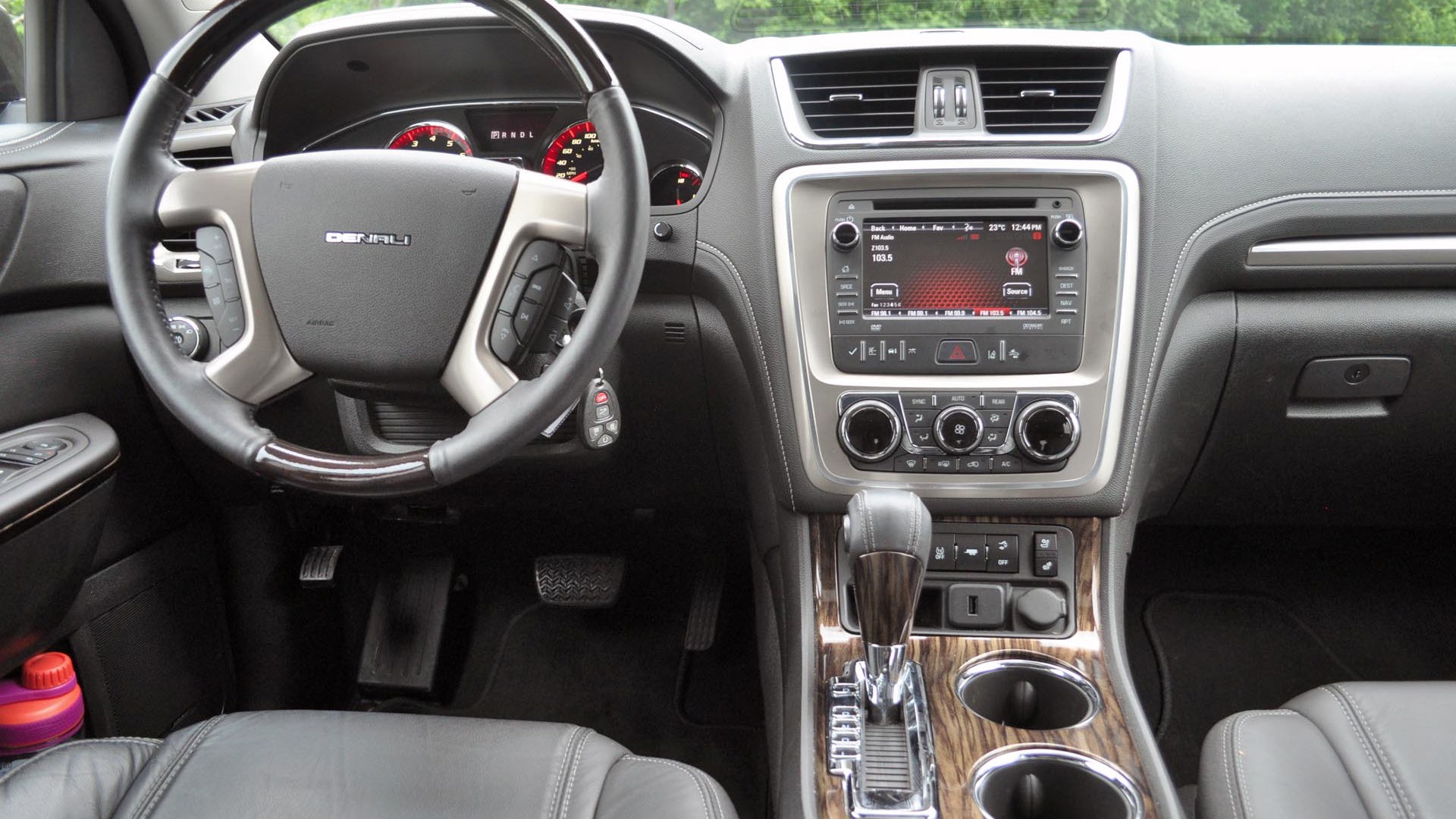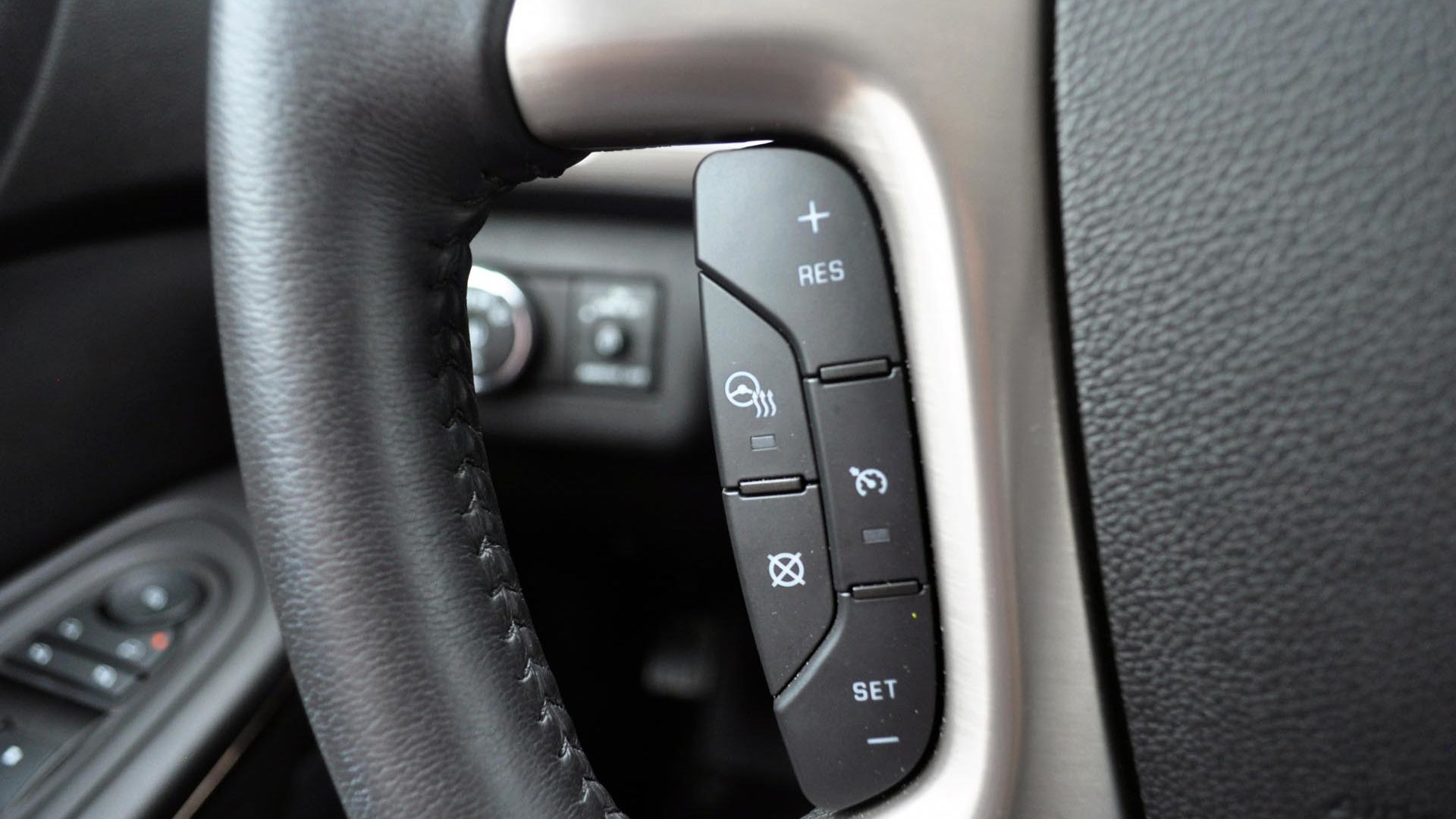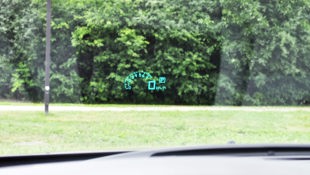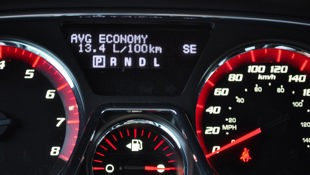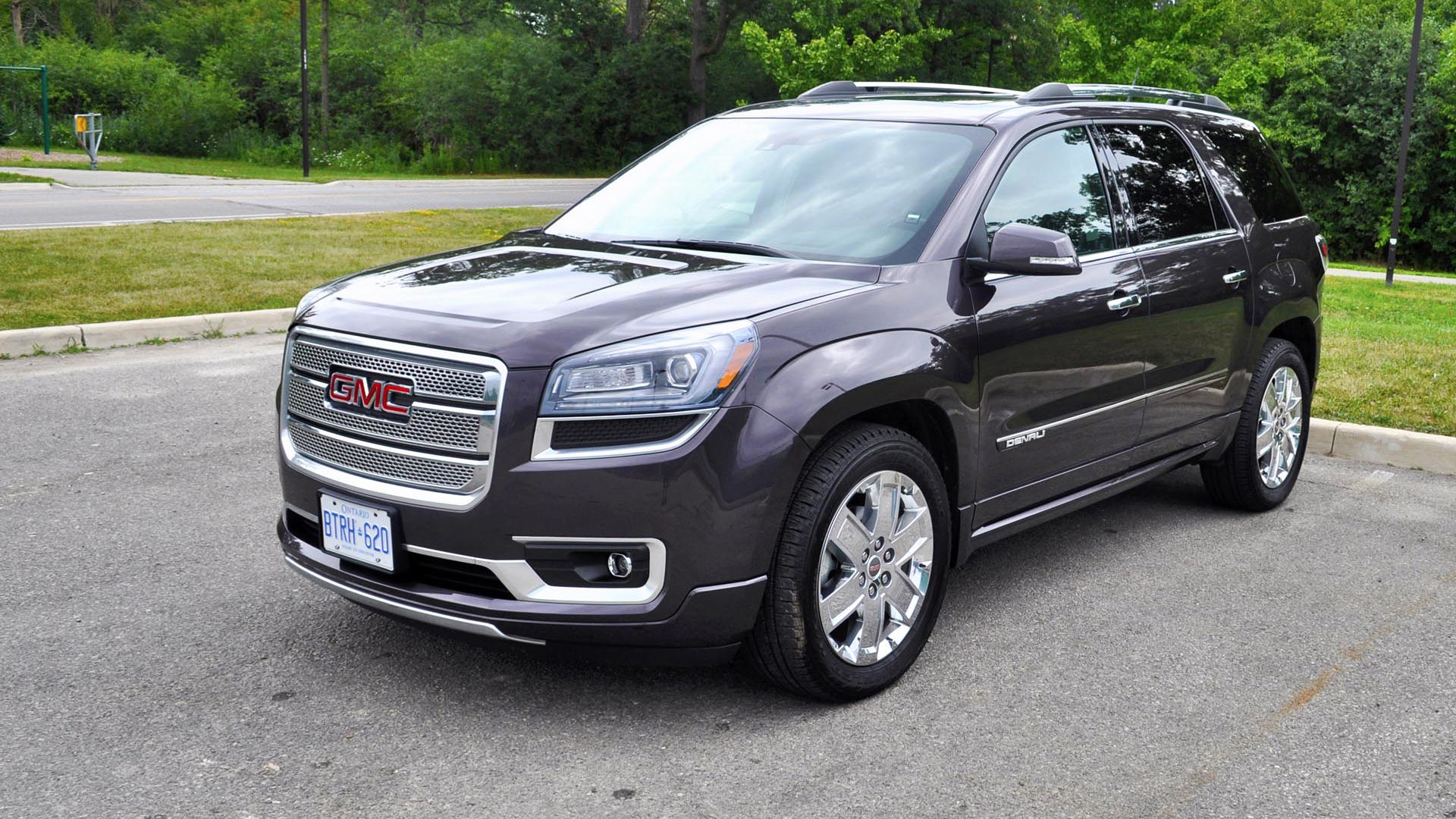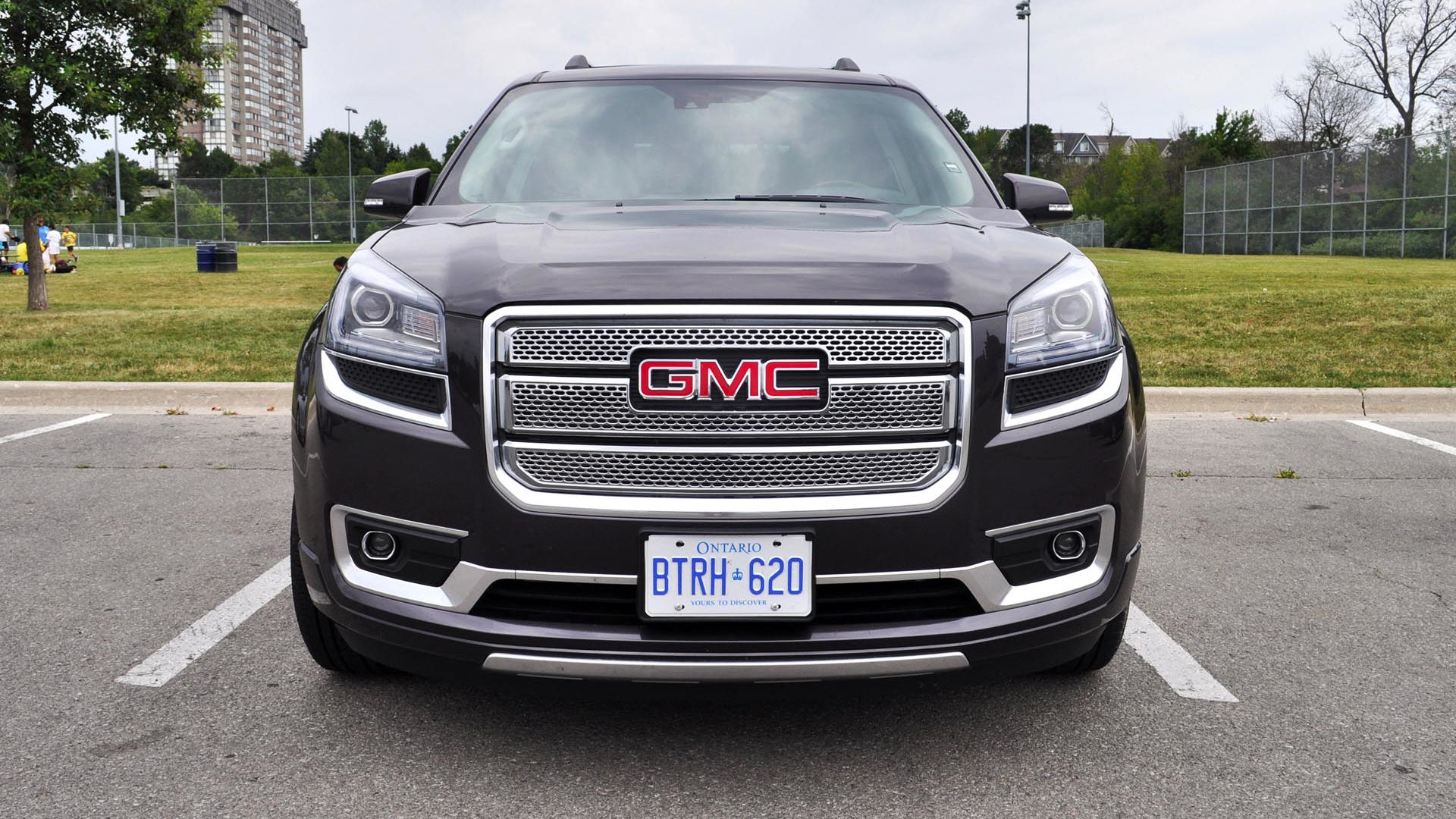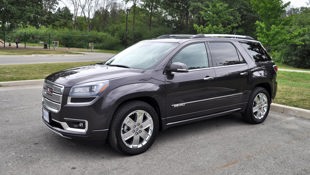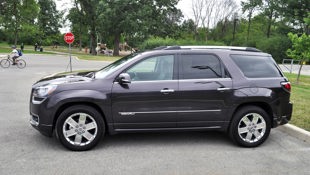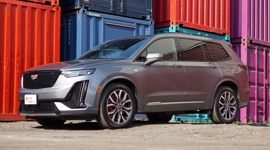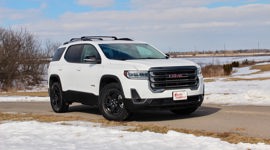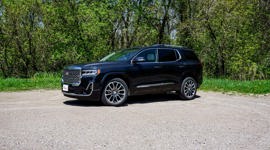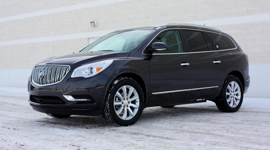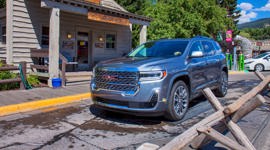 AutoTrader SCORE
AutoTrader SCORE
-
EXTERIOR STYLING6/10
-
INTERIOR8/10
-
PERFORMANCE6/10
-
COMFORT8/10
-
FUEL ECONOMY5/10
Who knew that Volvo’s line of boxy station wagons and Detroit’s big boat wagons would morph decades later into a popular sub-genre of boxy family haulers on stilts: the modern three-row SUV. Those Volvo wagons offered efficiently shaped bodies, while those massive domestic wagons were the ultimate family haulers before minivans hit the scene, offering up the space and inherent safety of a larger and heavier vehicle, in a package seemingly made to conquer long distance family road trips.
With the 2015 GMC Acadia, generous space, luxury features and family comfort trumps all.
Handling or driving fun was nowhere near the top of attributes of either of these vehicles.
And so it is now with the 2015 GMC Acadia, where generous space, luxury features and family comfort trumps all, especially in this top-of-the-line Denali version. This is a pampering seven or eight-seat crossover that revels in offering much of the creature comforts of a Cadillac, but with a muted – but still present – bling factor.
That bling factor on the Denali includes plenty of bright chrome work, including the near vertical grille, body sides, door handles, rear bumper, roof rails and the snazzy 20-inch wheels, with sleek metallic trim below the headlights that help modernize its face. Thus fully accessorized, it’s one of the toughest vehicles to be stuck behind without sunglasses. But these flashy accents and an upright front end are piled onto a conservatively square-ish overall body shape, its straight-edged style subtly pumped up with swollen fenders, its large P255/55HR20 touring tires and wheels not quite filling them fully.
The largely straight edges of the body promise plenty of interior room, and the full-size Acadia does not disappoint. Overall passenger volume is slightly more than the Ford Explorer, significantly more than the Toyota Highlander, but somewhat smaller than the cubic-to-the-max, built-in-Canada Ford Flex. This is GM’s minivan replacement, along with its Chevrolet Traverse and Buick Enclave corporate siblings, so it has to be practical. Its third row disappears into a nicely flat floor, the second row folds forward and out of the way for easy third-row access, and there’s still a class-leading 682 L worth of cargo space with all three rows up.
The Acadia Denali driver sits up high in a commanding throne position, with a nice high centre armrest that makes it easy to keep both hands on the wheel with elbows resting on cushioned supports. Our tester’s interior appeared to have had a run in with a white paint can, or perhaps a painter unaware of having brushed up against their own handiwork. The cabin otherwise seemed of high quality to the eyes and touch, with wood accents on the steering wheel and centre console, lovely arctic-imitating cooled seats up front, plus a heated steering wheel and outboard seats in the first two rows, leaving only the third row occupants with chilly bums come winter.
Chrome or Platinum? First Drive: 2016 Ford Explorer Platinum
Speaking of seats, wide bodies will have no problem finding a comfortable position in either the front or rear captain’s chairs. Those wide perches and standard leather means there’s some noticeable torso sliding with any mildly enthusiastic cornering, so the driver will quickly learn to brace themselves with their left leg on highway ramps. This tester came with two captain’s chairs in the second row, with three across seating available if you’d like to forego the centre console back there.
What impressed us and our two device-addicted boys the most in the second row was the rare inclusion of a real, three-pronged 110-volt outlet, allowing even a laptop to be recharged for DVD viewing, game playing or even rest stop message checking while on the road. This will help potential owners avoid the cost of the useful but pricy $2,110 rear seat entertainment system, which comes with an integrated overhead screen and two wireless headphones.
The DVD system is a great convenience, and judging from how our kids used it even on shorter commuting trips, there’s no doubt that its screen provides a great way to keep the peace (and quiet, and sanity) with bickering siblings. But there are two USB connectors in the rear along with that 110-volt outlet that also help kids pass the time immersed in their own world/device, with no parental fiddling needed up front with discs and multi-mode sound systems.
One handy option that the Acadia unfortunately doesn’t offer is the ability to stream high-speed 4G WiFi into the car, a capability offered on much less expensive but more recently designed GM models. Sure, this recently introduced hotspot capability will cost an additional $10-$15 per month for Canadian customers, but there’s no necessity to pay that cost on a continuous basis. So if you’re taking a long road trip and want to avoid exorbitant data and roaming charges on your smartphone when you’re down in the U.S., this option seems tailor-made for a roomy and comfortable family cruiser like the Acadia.
Keep in mind, the iPad or iPhone hadn’t yet been introduced back in late 2006 when the Acadia first went into production. Though the Acadia has been refreshed and updated extensively, with the top-line Denali added as a luxury trim in 2010, its basic design and drivetrain haven’t drastically changed since that initial introduction.
This age is most apparent in its driving dynamics, which were class-leading when it was first introduced, but now lag behind its more recently designed competitors. Its tall stance and comfort-oriented suspension settings means there’s noticeable body lean in corners, made more noticeable by that aforementioned soft but slippery leather. Its Cadillac-sourced 3.6L engine offers a responsive yet refined 288 hp and 270 lb-ft of torque, which helps provide it with a class-leading V6 towing capacity of 2,930 kg, as well as a sprightly feel when called upon.
Granted, it’s not nearly the firebreather sport sedan feel offered by either of the Ford seven-seaters when equipped with the turbocharged 3.5L 365 hp EcoBoost V6, or the 5.7L V8 available in the Dodge Durango Citadel. But then again, it offers much better fuel economy than the Hemi-equipped Dodge, and (slightly) less fuel consumption than the boosted Fords, plus on regular fuel instead of the EcoBoost’s high-test premium. The standard engines in all of these Detroit-based rivals land right in the same 12.4 L/100 km overall average ballpark.
In my week of mixed but likely city-heavy driving, the all-wheel drive Acadia Denali averaged 13.4 L/100km overall, which is not bad for a full-size SUV, but far from miserly. The electronic all-wheel drive adds three-tenths to this average, according to Canadian government figures, going from 12.3 L/100km average for the front-drive model to 12.6 overall for the on-demand electronic system, a relatively light fuel consumption penalty for such a system.
We took the Acadia Denali for a summer time spin to one of the few local drive-in movie theatres remaining, packing up the kids in their pajamas and pillows, with plans to put down the Acadia’s third row and enjoy the movie from that large cargo area with the tailgate up. Turns out that its flat-looking rear floor is not exactly flat. Even with pillows and relatively plush carpeting, we lasted about 45 minutes trying to get two adults and two kids in any semblance of comfort back there, before turning the Acadia around and thoroughly annoying everyone parked nearby.
Perhaps the area where the Acadia shines brightest is when it comes to safety – an obviously key consideration in this market segment. Like all GM vehicles, it offers OnStar, which is still a uniquely valuable and easy to use service that allows one to call up a real person and ask for directions while on the move, a key consideration if you travel alone often, on top of the automatic crash notification it sends out when any airbag deploys. But it also offers a unique centre-mounted airbag that helps prevent occupants from hitting each other or other hard points inside the Acadia during a crash or rollover, as well as the usual front, side and side curtain bags that protect all three rows.
Another high-tech safety features include a stolen vehicle recovery system that allows police enforcement to remotely bring the vehicle to a stop, which sounds creepy until your car is actually stolen. More common safety systems include a blind spot warning system and a rear cross-traffic audible warning when in reverse. The advanced Jetson’s feel continues with the head-up display that ghosts an image of your speed, outside temperature, and/or engine rpm as well.
All this advanced safety gear, luxurious passenger space and pampering convenience are ultimately what’s behind this GMC Acadia’s fairly steep $61,410 as-tested price. While it’s easy to suggest that one could buy a much more prestigious German brand for such an outlay, it wouldn’t be with nearly the same amounts of these three key attributes. This is not the type of vehicle that enthusiasts or children will paint as their muse, but both will appreciate its subtle charms over years and long distance road trips, as will parents. Especially if those parents note that many of these key safety technologies are available in Acadias that start at less than $50k.
| Warranty: 3 years/60,000 km; 5 years/160,000 km powertrain; 6 years/160,000 km corrosion perforation; 5 years/160,000 km roadside assistance Competitors: |
| Model Tested | 2015 GMC Acadia Denali AWD |
|---|---|
| Base Price | $56,460 |
| A/C Tax | $100 |
| Destination Fee | $1,650 |
| Price as Tested | $61,410 |
|
Optional Equipment
$3,200 (Rear Seat Entertainment System $2,110; 20-inch aluminum wheels $575; Midnight Amethyst $515)
|
|
